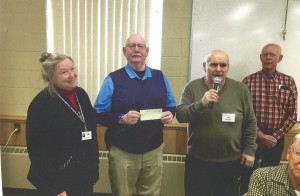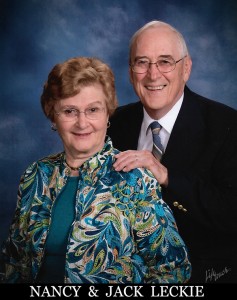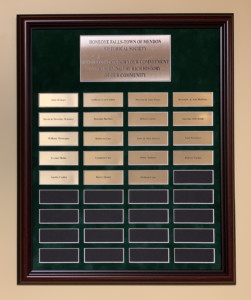BY SUSAN MEE
Your Voice is Needed…
As the Rush Town Historian, I am asking our Rush residents, both current and former, along with area residents to voice their support in saving the former St. Joseph’s Church. The church has a long history and a deep connection to our town’s early families. The church building is a landmark in our community. It sits majestically at the southern point of our East Rush hamlet. This location makes it the most visible structure in our town and it serves as a welcoming beacon to all who pass through.
Now, more than 160 years since the formation of a Catholic society in Rush and 143 years since the construction and dedication of the church building, we find ourselves at a crossroads. Can you imagine our Rush hamlet without the presence of the former St. Joseph’s Church building? What would be lost? Have you considered how it could be repurposed or that it could possibly even be demolished?
Top Rochester Architects and Design:
In addition to what the church building and its strategic location mean to our community, it is also important to understand the importance of its design. The church construction was completed in 1881. The building was designed by the well-known and highly regarded architectural firm of Warner and Brockett from Rochester. The Warner and Brockett firm consisted of Andrew Jackson Warner (1833-1910); his son, John Foster Warner (1859-1937) and his nephews, Frederick and William Brockett. Andrew Jackson Warner, the second generation in a family of distinguished architects, was the leading Rochester architect of the 19th century. His son, J. Foster Warner, and his Brocket nephews, continued the work and reputation as leading Rochester architects in the first half of the 20th century. Some well-known examples of their work are listed below:
- The Powers Building, 1869, Rochester, listed on the National Register of Historic Places in 1976.
- First Presbyterian Church, 1871, Rochester, listed on the National Register of Historic Places in 1973.
- The First Presbyterian Church of Mumford, 1883, listed on the National Register of Historic Places in 2002.
- Wilder Building, Rochester, 1887-1888, listed on the National Register of Historic Places in 1985.
- Saint Bernard’s Seminary in Rochester, 1891, listed on the National Register of Historic Places in 1996.
The Willard Memorial Chapel-Welch Memorial Hall, 1892, Auburn, listed on the National Register of Historic Places in 1989, designated National Historic Landmark in 2005.
It is unknown whether one or all of these talented men contributed to the design of St. Joseph’s church, but it is likely that A.J. Warner, as the firm’s lead architect, signed the drawings. Sadly, many of the firm’s records were lost in the 1904 fire in Rochester’s Granite Building where their office was located.
The American Carpenter Gothic architectural design was a thoughtful choice for our rural community and for its site location within the Rush hamlet. American Carpenter Gothic was also known as Carpenter’s Gothic or Rural Gothic and is a style that was part of the Gothic Revival movement. Carpenter Gothic houses and small churches became common in North American in the later 19th century. The American Carpenter Gothic style adapted Gothic design elements such as pointed arches, steep gables and towers. All of these features are part of the former St. Joseph’s Church in Rush. The Carpenter Gothic style in our Rush church is also evident in the heavy four-tiered bell tower and the symmetrical style of the front of the church. The main entrance is actually part of the tower, with a round window located at the top of the tower. The windows across the front of the church are grouped in twos and threes. All of these features are elements of the American Carpenter Gothic architectural style.
Potentially Eligible for National Registry of Historic Places:
Several surviving American Carpenter Gothic structures are listed on the National Register of Historic Places. Many have been lost through the years to demolition and new development. Many buildings still standing, such as Rush’s former St. Joseph’s Church, could face the danger of demolition. Placing Rush’s structure on the State and National Registry could help ensure its preservation.
Many still existing buildings designed by A.J. Warner and his son, J. Foster Warner are on the State and National Registers of Historic Places. The former St. Joseph’s Church has both its design and its renowned architects in its favor.
I believe Rush’s former St. Joseph’s Church deserves both recognition and preservation. It has been and continues to be a valued and important part of our community and of our history.
Petition to Save the Building:
Seventeen Catholic families requested Bishop Timon to form a catholic society in Rush in 1863. The Bishop responded by establishing the St. Joseph’s Catholic Society of Rush on March 25, 1863. The commitment of those original 17 Rush families has served our community well. Change is not easy and the loss of St. Joseph’s Church to our community and to the Rush hamlet carries a big impact. As either former or current Rush residents, along with those in the surrounding area, this is our opportunity to preserve a piece of what earlier Rush families created. Please consider signing a petition to express in numbers our concern and commitment to saving the building that has been a landmark in the Rush community for more than 140 years. The link to the online petition follows and your privacy is assured,
https://tinyurl.com/saveourchurchbuilding
You can also access the petition via the following QR Code:
In summary, the words of Father Vogt still ring true today.
“Besides your faith, which you inherited from the pioneers of this land, you have this beautiful church, a jewel in the heart of the village of Rush.” ……Father George Vogt, 1964.
References:
-Brayer, E. (Summer 2012). J. Foster Warner. Historic Brighton News, 13(3).
-Carpenter Gothic (2024, May 26). Retrieved from: https://en.wikipedia.org/wiki/Carpenter_Gothic
-Highlights of a Century, St. Joseph’s Church.(August,1964). St. Joseph’s Historical Committee.
-Vanderlinde, A. (2024, August 1). Personal Communication.








